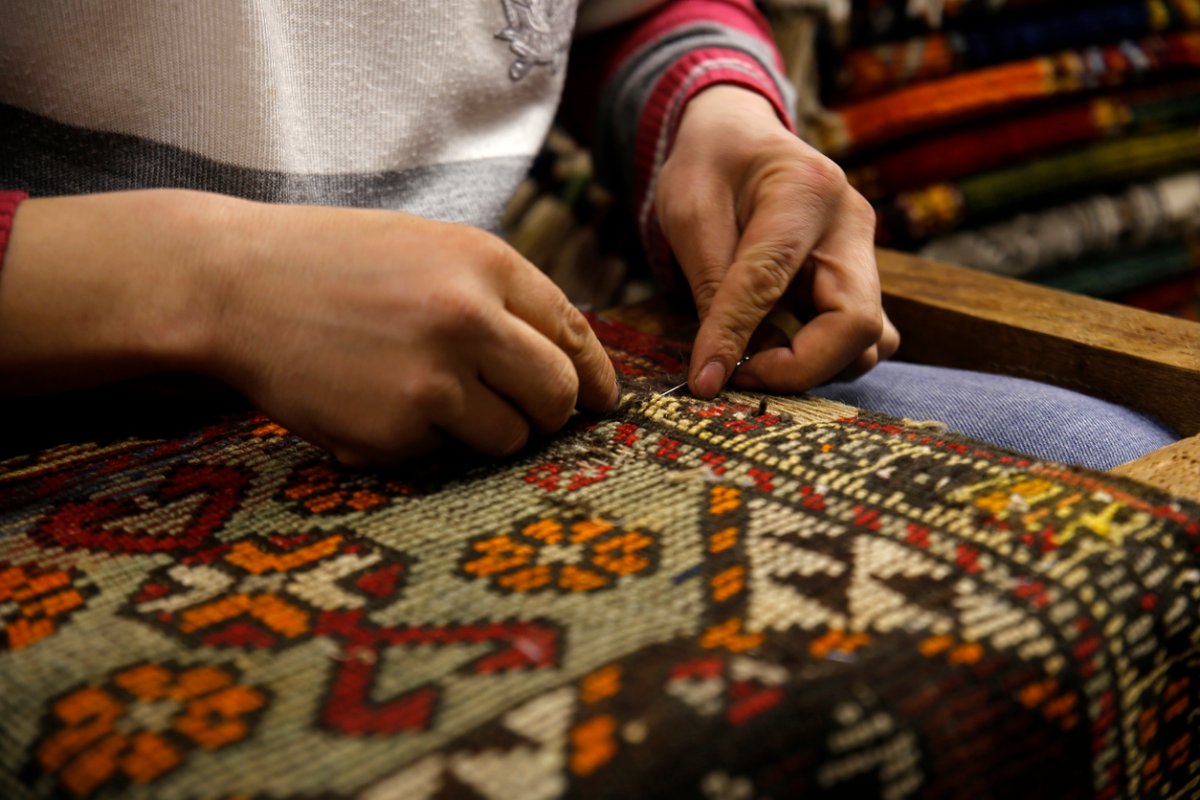We may earn revenue from the products available on this page and participate in affiliate programs. Learn More ›
- Typical Range: $131 to $278
- National Average: $204
Carpeting is an accessible, comfortable, and affordable flooring option—that’s why many homeowners choose to use it at least somewhere in their homes. Over time, carpets will wear down and may require repairs due to holes, tears, fading, or other damage. If you are in need of carpet repair, there is a lot to know about the costs and methods.
According to HomeAdvisor, carpet repair cost ranges from $131 to $278 with an average cost of $204. The exact cost to repair carpet depends on the type of damage and the type of repair, along with several other factors. This guide details everything homeowners need to know about carpet repair costs, including common repair methods and ways to hire one of the best carpet installation companies to complete the task.
Factors in Calculating Carpet Repair Cost
The cost of carpet repair depends on a number of factors. The type of repair, the type of damage, and the room size play the biggest role in the overall cost, but there are other factors to consider as well.
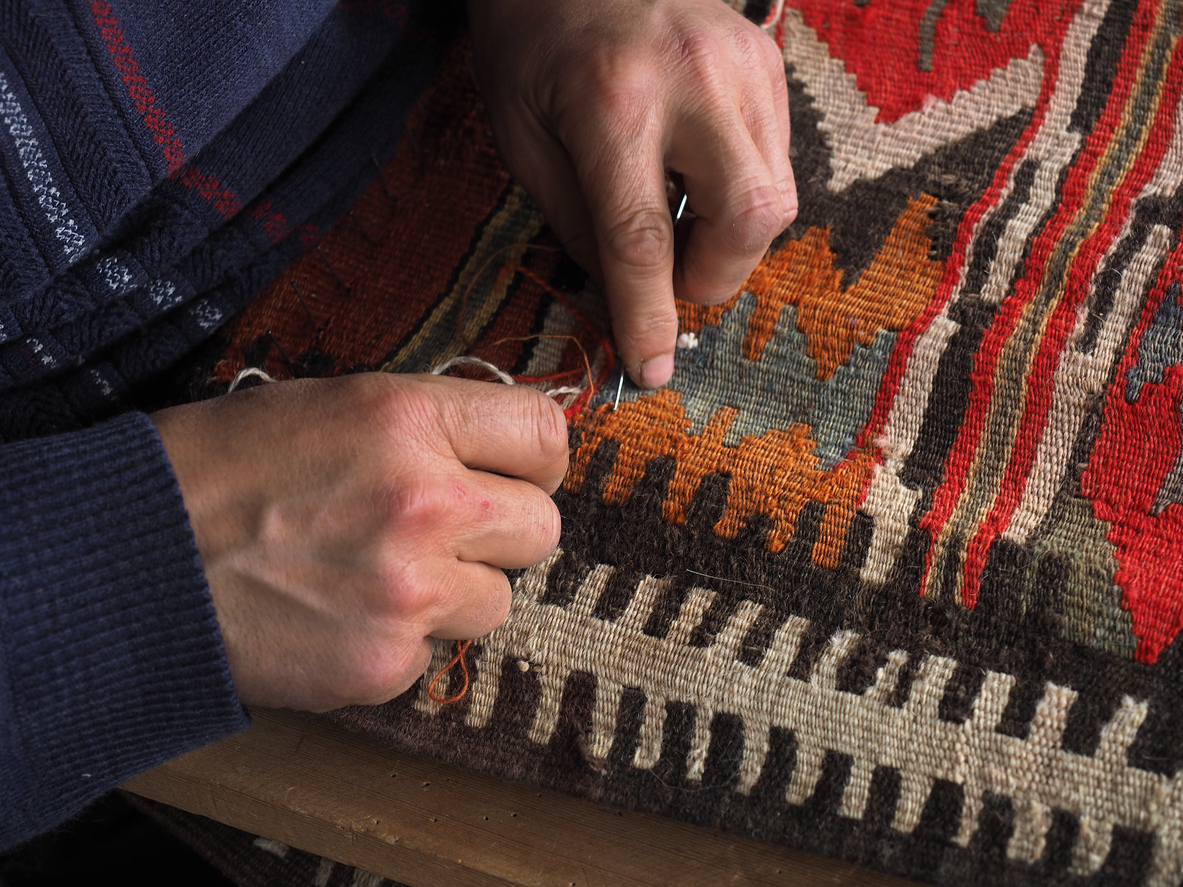
Repair Type
Depending on the carpet damage, there are a few different repair methods to choose from. Carpet cleaning is a standard for stain removal or regular maintenance. Professional carpet cleaning costs anywhere from $130 to $250. Carpet stretching is another type of repair and costs between $100 and $300. This repair method removes wrinkles and ripples in carpet by stretching the material to eliminate the excess. For holes, tears, and burns in carpet, patching is the best repair option. This costs $150 to $250 and requires a small piece of the existing carpet to patch into the damaged area. The last type of repair available is carpet dyeing. For $125 to $600, a faded or bleached area of carpet can be dyed back to the original color.
Damage Type
Carpet is especially susceptible to damage as it is walked over and lived on. Each type of damage requires a different repair with varying costs. Some common carpet damage types and the cost of repairs include the following:
- Water damage: $300 to $1,000
- Pet stains or damage: $150 to $800
- Burns: $150 to $250
- Tears: $100 to $250
- Snags: $150 to $250
- Bleaching or fading: $130 to $380
- Loose carpeting: $100 to $300
Room Size
The size of a room is a factor that determines the cost to repair and the cost to replace carpet. In general, carpet repairs cost about $1.85 per square foot. Homeowners can expect to pay $190 for carpet repairs in a 100-square-foot space, $370 for 200 square feet, $560 for 300 square feet, $740 for 400 square feet, $930 for 500 square feet, and so on. At a certain point, it may be more cost efficient to just replace the carpet rather than complete a larger and more expensive repair.
Carpet Material
During a carpet repair, the carpet material plays a role in the overall cost. Each material can require slightly different repair and installation methods. Carpets made from materials like polyester, olefin, and polypropylene tend to be the cheapest to repair at $1 to $1.25 per square foot each. Repairing nylon and acrylic carpet materials costs $1.25 to $2 per square foot and $1.50 to $3 per square foot on average, respectively. Triexta and wool carpets are the most expensive to repair at $2 to $3 per square foot each.
Labor
Labor makes up most of the cost of carpet repair and usually costs between $60 and $80 per hour. It takes anywhere from 2 to 3 hours to repair about 10 square feet of carpet. In most cases, a carpet installer will handle the carpet repair, but a general handyman could also complete some of the simpler repair tasks. Hiring a qualified carpet repair expert who knows how to stretch carpet and how to patch carpet is well worth the cost, as the repair will be done right and last longer.
Accessibility
Damaged carpet can occur anywhere in a home. The more difficult the area is to access, the higher the repair price will be. This is because the carpet repairer will need to take extra measures to work within the confined or awkward area. Expect to pay 10 percent to 20 percent more than the average carpet repair cost for repairs in difficult-to-reach areas.
Additional Costs and Considerations
In addition to the carpet repair cost factors detailed above, the following will also apply under some circumstances. Homeowners can expect a higher carpet repair cost if the carpet needs to be replaced rather than repaired, if the carpet padding needs to be replaced, and if furniture needs to be moved.
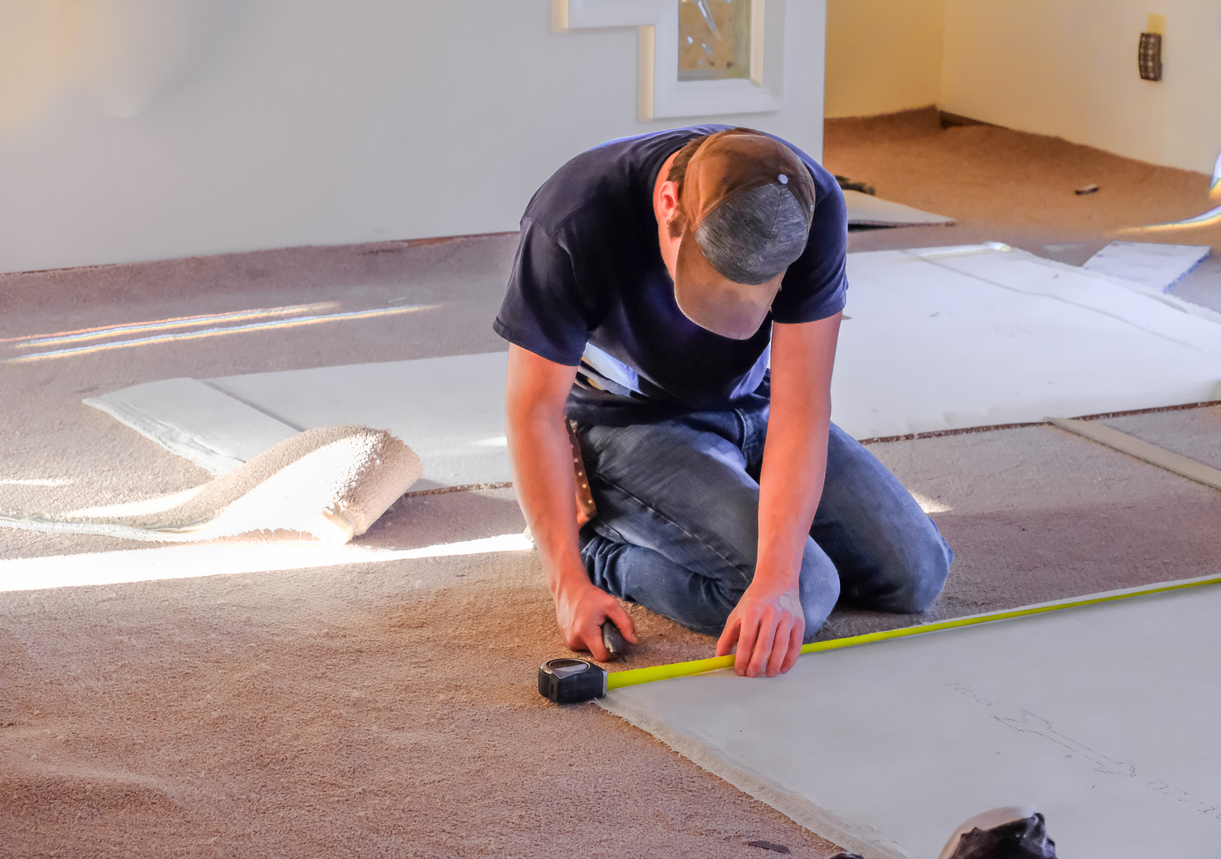
Repair vs. Replacement
In some cases, it makes more financial sense to replace carpet than repair it. Usually, this is when a large quantity of carpet requires repair, so the repair cost could end up exceeding the cost of the replacement carpet. How much does it cost to replace carpet? Carpet replacement ranges from $950 to $3,030. This includes the cost of carpet removal to get rid of the old carpet and the cost of carpet installation for the replacement. How much to replace carpet depends on the type of carpet being installed and the quantity. Homeowners will also want to consider hiring one of the best carpet removal services to make sure the old carpet is completely gone before the new one is installed.
Padding Replacement
If carpet is significantly damaged, whether by water, pets, or another factor, the carpet padding beneath may also require repair. It usually makes the most sense just to replace carpet padding rather than patch or repair it. The padding plays an essential role in protecting the subfloor; therefore, a seamless layer of padding is important. Replacing carpet padding costs anywhere from $0.75 to $2 per square foot for materials and $70 per hour for labor.
Furniture Moving
In order for carpet to be replaced properly, the furniture placed on top of it must be moved. If the homeowner wants the carpet repair professional to move the furniture, they can expect to pay a fee. This process will generally be charged at the same hourly rate for the carpet repair of $60 and $80 per hour on average. Only the furniture sitting directly above the carpet repair area will need to be moved for the repair process.
Types of Carpet Repair
There are four main types of carpet repair methods, each one ideal for certain types of carpet damage. Homeowners can learn more about the types of repair in order to find out which one might be best for their situation.
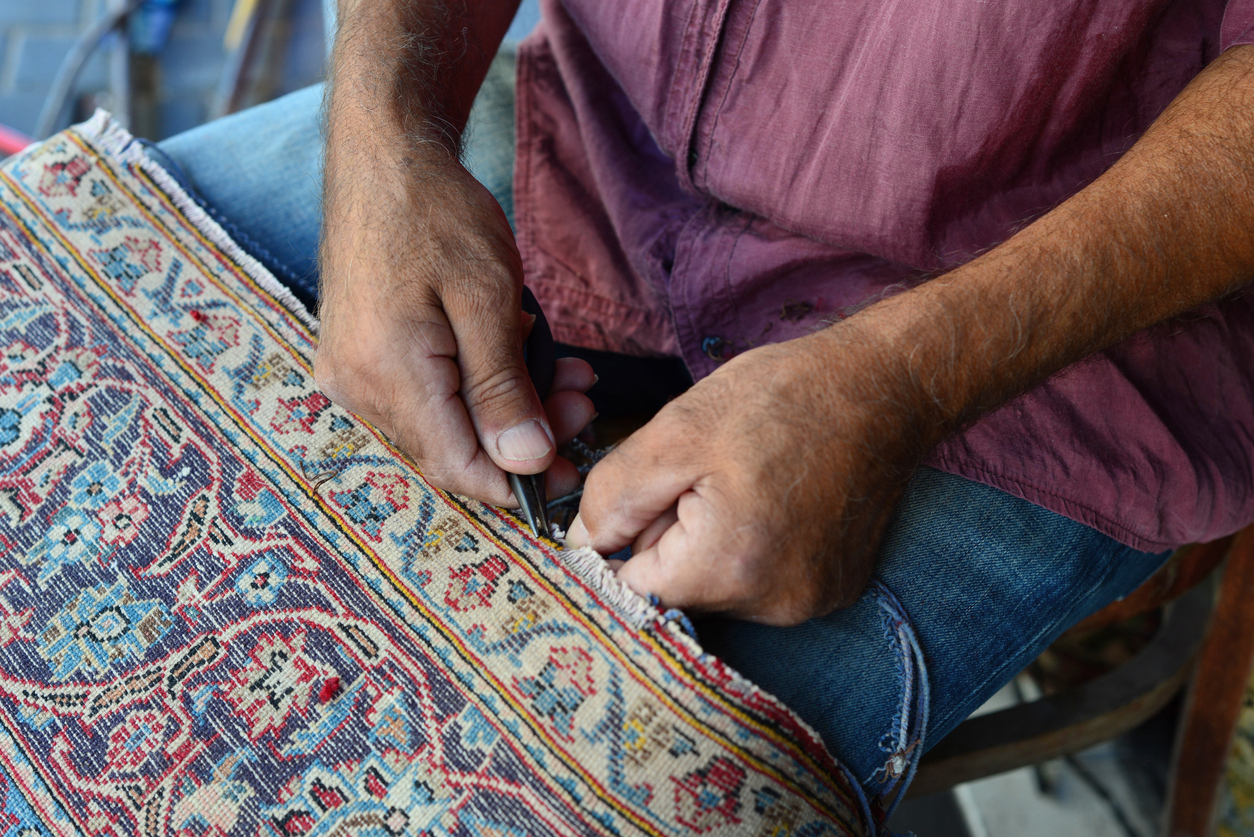
Stretching
Carpet with wrinkles, bubbles, or ripples can be repaired with a stretching technique. Carpet stretching typically costs $100 to $300 in total, or $40 to $80 per room after the cost of the first room of around $100. The process requires pulling and stretching the carpet so it is tighter and then tacking it back down. Carpet repair contractors could also charge hourly or by the square foot for this process; on average, homeowners can expect to pay $60 per hour or around $0.35 per square foot. Carpet stretching helps an old, worn-out carpet look new again. Damage at the edges can often be eliminated using this method, helping to extend the overall life of the carpet.
Patching
Sometimes a carpet needs to be patched if a hole, tear, or burn occurs. The cost for this type of repair is $150 to $250, depending on the size of the patch. The repairer will need a piece of the existing carpet in order to complete the patch repair. If a spare piece is not available, the contractor might be able to remove some of the existing carpet and use it for the patch, but this is rare. Taking a piece of carpet from an inconspicuous area to replace a piece in a high-traffic area is possible but not preferable. The piece of carpet is stretched and patched into the floor where needed.
Cleaning
The cost of professional carpet cleaning ranges from $130 to $250. Cleaning is useful when a carpet becomes stained or dirty, but it is also a good idea to regularly deep clean carpets in a home to remove allergens, prevent mold growth, and extend the life of the carpet. Additionally, for those moving into a new home or rental, a carpet cleaning offers a fresh start. The best carpet cleaning companies recommend cleaning at least once a year and potentially more often for those who have pets or children or who wear shoes in the house. Homeowners can expect to pay more for carpet cleaning where there is severe staining.
Dyeing
If a carpet has been bleached or is fading, it can be dyed back to the original color. Carpet dyeing costs around $1.50 to $2.50 per square foot or $125 to $600 total. Carpet dyeing is typically done for just a small faded section and is not a solution to repair an entire room of carpet. Ideally, the carpet can be dyed to match the original shade, but it is not always that easy. The carpet repair professional will need to dye a small area as a test before proceeding with this type of repair.
Do I Need Carpet Repair?
There are several different types of carpet damage that require carpet repair. If a carpet exhibits any of the following issues, the homeowner may want to consider scheduling service with a carpet repair or cleaning company.
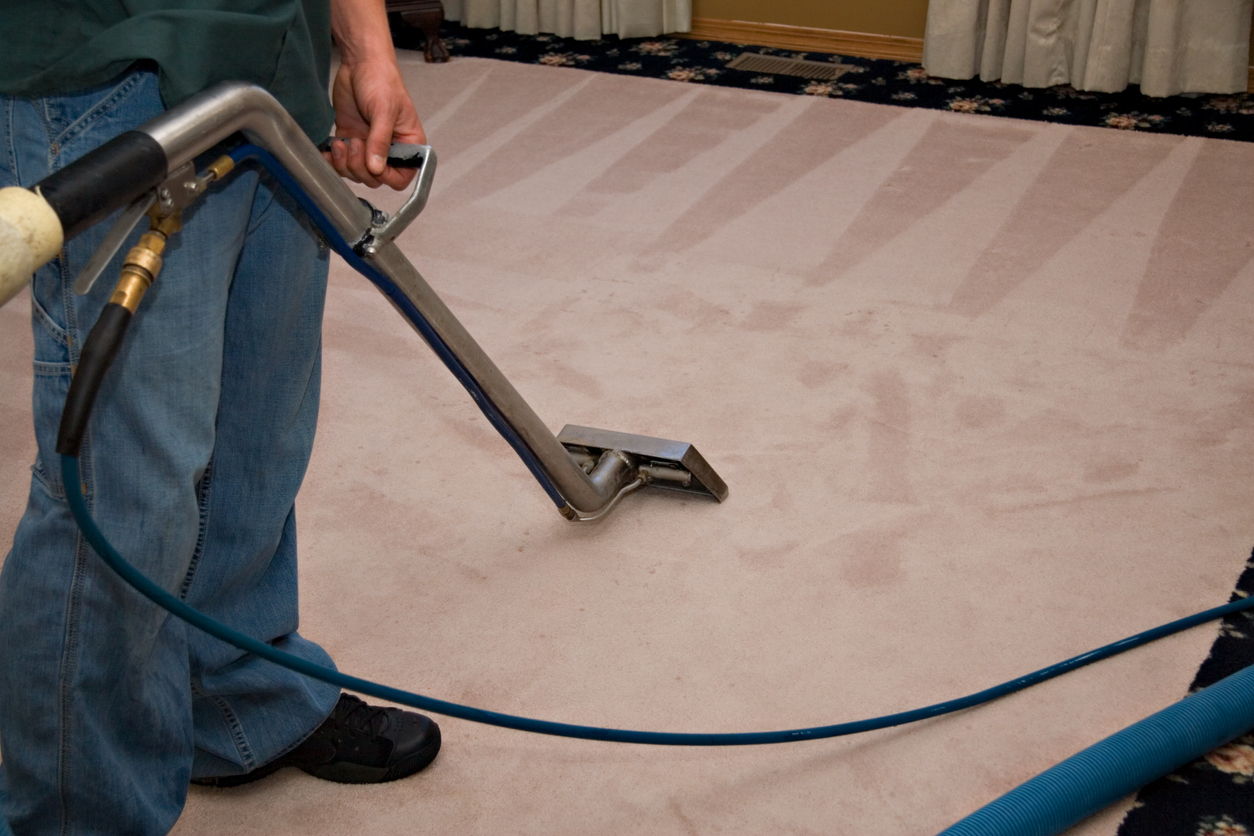
Water Damage
Water damage is a more expensive type of carpet damage to repair, costing between $300 and $1,000. The actual price depends on how extensive the damage is and can quickly rise above $1,000 if the carpet padding and subfloors also need to be repaired or replaced. The cost also varies depending on the type of water that caused the damage, whether clean, gray, or black, and whether any cleaning or sanitizing is necessary.
Pet Stains or Damage
Pet damage can also vary in its extent. It usually costs $150 to $800 to repair carpet damage done by a pet. The problem is usually either staining, which would require carpet cleaning, or rips and tears, which would require patching. If the damage is bad enough, the carpet padding and subfloors may also need to be replaced, which will quickly increase the price higher than $800.
Burns
Carpet burn damage is usually repaired by removing the burned piece of carpeting and patching it with a piece of new carpet. This process costs anywhere from $150 to $250, depending on the size of the burn. If there is not a remnant of carpet available for a patch, the carpet will likely need to be stretched, which is a costlier service.
Tears
Carpet can tear for a number of reasons as it is walked over day in and day out. Repairing a carpet tear costs anywhere from $100 for small tears and up to $250 for tears that require patching. A patch requires a spare piece of carpet that can be removed from a low-traffic area to fix a tear in a high-traffic area.
Dents
Fixing a carpet dent costs anywhere from $100 to $300. Dents can appear in carpet if furniture legs remain in the same spot for an extended period of time. Sometimes steaming the dented area can relieve the problem, but more serious dents do require patching or replacing the carpet.
Holes
If a hole appears in a carpet, it can be repaired with a patch. Patching a carpet costs anywhere from $150 to $250, depending on the size of the hole. If the hole is sizable, a patch repair may not be feasible and the carpet will instead need to be replaced.
Snags
Carpet snags occur when the thick material loops begin to unravel. While some experts may be able to thread the carpet back together and reattach the backing, most often the carpet will need to be patched for $150 to $250.
Rippling
Over time, carpet can loosen, which creates ripples. To repair carpet rippling, the carpet needs to be pulled up, stretched, and tacked back down. This process costs between $100 and $300, depending on the extent of the rippling damage.
Bleaching or Fading
If a carpet becomes faded or accidentally bleached, it can be restored to its original condition. This is done by a process known as carpet dyeing and costs anywhere from $125 to $600. This process can also be used to repair sun-damaged carpet. Homeowners will want to keep in mind that bleached or faded carpet is not always repairable, depending on the extent of the damage.
Loose Carpeting
Carpeting that loosens up over time can quickly become a trip hazard. Carpet stretching will repair loose carpeting and costs $100 to $300. Loose carpeting can also be a symptom of a poor carpet installation job. It’s always important to hire a qualified expert to install carpet so the job is done correctly from the start.
Carpet Repair: DIY vs. Hiring a Professional
Some homeowners may be eager to try out carpet repair themselves. While a few of the repair processes may seem fairly straightforward, carpet can be a tricky material to work with. If the repair is not properly completed, it will not last long, and the homeowner will likely be looking for another repair option sooner rather than later. Additionally, carpet that is not repaired correctly could become even more damaged than before, with holes widening and tears lengthening.

For these reasons, it is best to hire a professional for the job. Typically, homeowners will hire a carpet installer who is an expert on the product and in making repairs. The professional will have all of the tools and knowledge needed to complete the repair. The homeowner can also rely on the expert for any questions they may have about the situation. The expert can walk the homeowner through different repair options and help decide if carpet replacement is a better financial choice.
Last but not least, the homeowner may want to consider their carpet warranty. If the carpet is still under warranty, a DIY repair may void it. Hiring a professional or the original installation company to complete the repair will keep the warranty intact, which can save money in the long run.
How to Save Money on Carpet Repair Cost
There are a few ways homeowners can save money on carpet repair costs. While hiring an expert to complete the actual repair procedure is recommended, there are a few ways the homeowner can get involved and save some cash in the process.
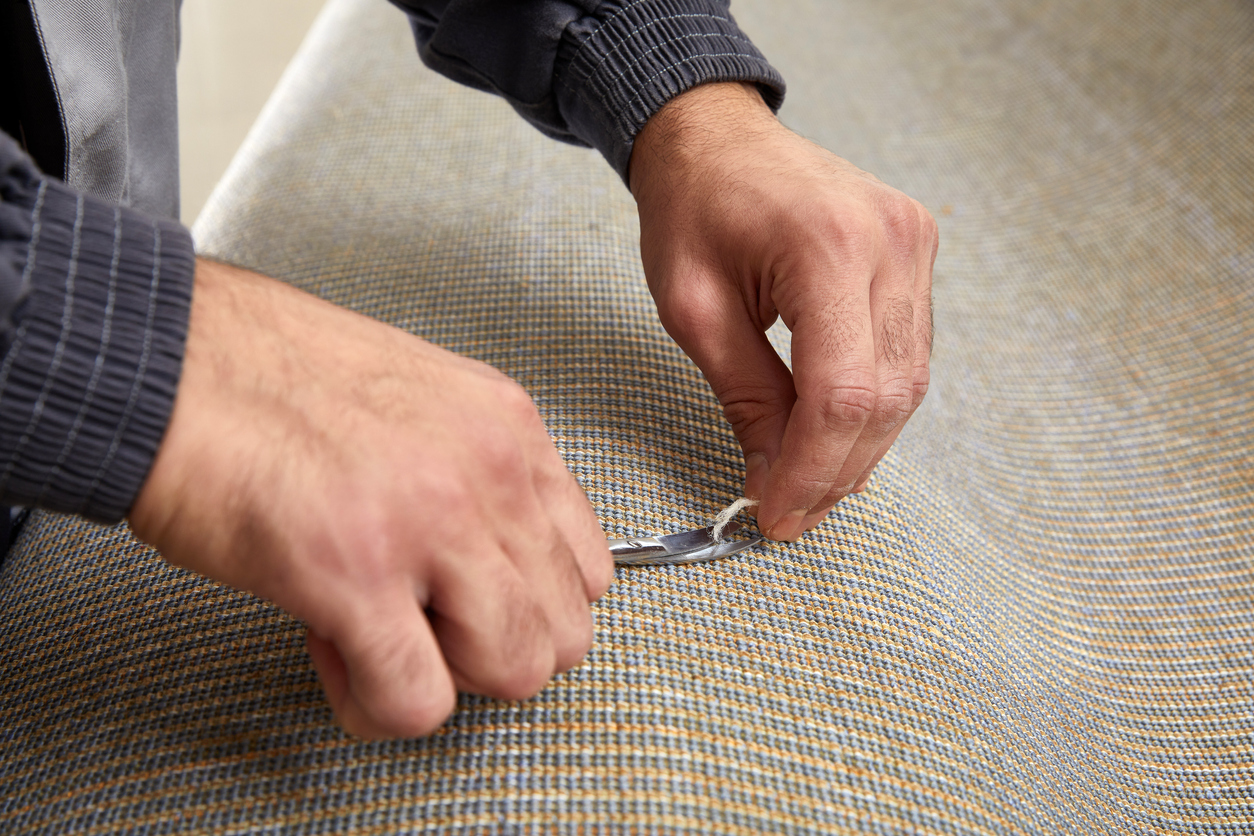
- Move the furniture out of the way. If any furniture is located on or near the carpet that needs to be repaired, the homeowner can take the time to move it out of the way themselves or enlist the help of a friend or family member. Otherwise, the carpet repair or carpet removal company might charge extra to complete this task.
- Keep up with carpet maintenance. Carpets will last for many years and won’t require repairs if they are well taken care of. Homeowners will want to regularly clean their carpets by hiring a professional carpet cleaner, especially if they have pets or kids. Additionally, homeowners are advised to take care when moving items across the carpet surface so nothing snags and creates a hole.
- Protect carpet in high-traffic areas. Sections of the carpet that are constantly walked on will wear much more quickly than other spots. Homeowners may want to consider placing a runner rug over their carpet in high-traffic areas or attempt to switch up the walking paths throughout their home with new furniture placement. Another option is to rotate a carpet 180 degrees if only a section of it is frequently walked on, so that the carpet wears more evenly.
Questions to Ask About Carpet Repair
After searching for “carpet repair near me,” homeowners may want to compare the costs and services of multiple repair contractors to find the one that best fits their needs and their budget. The following questions will help homeowners screen each potential contractor before signing a contract and starting work.
- Are you licensed and insured to perform this type of work?
- Will you provide a written quote and contract?
- Do you offer free estimates?
- How long have you been in business?
- Will the work be completed by an employee of your company or a subcontractor?
- Can you provide references from similar projects?
- What carpet repair method do you recommend?
- Is it more cost efficient to repair or replace the carpet?
- How soon can you schedule the work?
- How long will the repair take?
- Do you require a down payment, and if so, how much?
- What is the payment schedule, and do you offer payment plans?
- Do you offer a warranty on your work?
- Will you take care of the cleanup after the project is complete?
- How do you handle disputes or disagreements?
FAQs
The average homeowner may never need to complete a carpet repair, so it is not a topic most know about. The following frequently asked carpet repair questions will help homeowners learn as much as possible about the topic.
Q. Can you replace just one piece of carpet?
Yes, it is possible to replace just one piece of carpet with a repair method known as patching. As long as the damaged area is not too large, a spare piece of carpet can be patched into the rest of the carpet. The homeowner will need to have a remnant piece of carpet available for the professional to complete the patch. If a remnant, they may consider removing a piece of carpet from another area in the home that is not often seen, like in the back of a closet. A professional can make recommendations on the best way to do this.
Q. How do you repair carpet yourself?
Homeowners who want to try their hand at DIY repair will want to start by locating a spare remnant or new piece of carpet that matches the existing carpet. Next, they’ll need to mark and remove the damaged section of carpet with a utility knife and then cut and dry fit the new piece of carpet into the repair location. Finally, the homeowner will apply carpet tape on the back of the new piece, place it in the repair location, and blend it out with the existing carpet. Doing it this way will cost less, but there’s a higher chance that the homeowner will make a mistake and end up with a strange-looking repair that ultimately needs a professional to fix it. For this reason, it’s recommended that homeowners hire a professional for most carpet repair jobs.
Q. Can carpet burns be repaired?
Carpet burns can be repaired by carefully removing the damaged piece of carpet, cutting a new piece of carpet to fit the size of the burned piece, and installing the new piece of carpet with carpet tape. The new carpet will then need to be blended with the old carpet for a seamless look. Professionals can perform this repair relatively easily.
Q. Is it worth restretching the carpet?
It is usually worth it to restretch a carpet. If the carpet is relatively new and showing signs of rippling, stretching the carpet will bring it back to its original state and is much cheaper than replacing it. If the carpet is older and there is a large area that is rippling, it may make more financial sense just to replace the carpet. Homeowners can speak with an expert to determine which makes more sense.
Q. How do you cover up a burn hole in carpet?
The best way to cover up a burn hole in carpet is by cutting away the burned carpet fibers, retrieving carpet fibers from another area of the home that is not often seen, and gluing those new fibers in the location of the burned fibers. If the burned area is larger, the homeowner will need to patch the location with a remnant or new piece of carpet.
Q. Can I fix the carpet with super glue?
It is possible to fix carpet with super glue; however, it’s important for homeowners to keep in mind that super glue dries very hard and can become uncomfortable to walk on. Instead, homeowners may consider using a silicone or latex adhesive to repair carpet. These types of glues are more forgiving and softer when dry.
Sources: HomeAdvisor, Fixr

